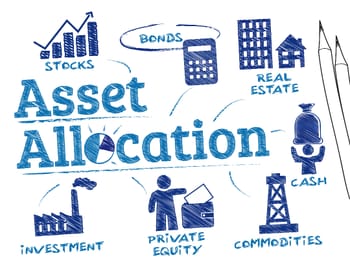Why Start Savings Lessons for Kids Early?
Saving is more than a simple skill. It’s one of the most effective ways to teach kids about money, building patience, focus, and the ability to delay gratification. Kids that save money also learn to plan, prioritise, and think long term. These skills stay with them for life — in school, work, and everyday decisions.
Saving also encourages responsibility. It gives children a sense of control over their choices and helps them feel more confident when making decisions. Knowing they can work towards a goal and reach it builds self-belief from an early age.
Poor financial habits at home can affect people well beyond childhood. The American National Institutes of Health [1] links a lack of early money guidance to anxiety and avoidance behaviour around finances. Research by the UK Centre for Social Justice [2] also shows that many young adults feel shame or social pressure when managing money, often rooted in early family experience.
Teaching children about money early and setting a positive example helps prevent that. By the age of seven, many core money habits are already formed, according to a study by the University of Cambridge [3]. Children of this age already show patterns in how they spend or save. They pick up beliefs and behaviours by watching adults, especially their parents.
So, early lessons don’t need to involve any financial tools. They can start with a piggy bank, a toy shop, or even a simple “wait and get more later” game. Your role is to explain to a child how money is being saved — not as something to use up right away, but as a tool to manage wisely. That mindset takes root long before the first pocket money arrives.

How to Teach Saving: Age-by-Age Tips
Saving habits take root more easily when the lessons match how a child sees the world. Each stage of development comes with its way to teach kids to save money — by matching how they think and learn. That’s why it’s important to introduce saving gradually, in ways that feel natural, not forced. The right message, at the right time, can make all the difference.
Ages 3–5: Start with Simple, Visual Lessons
Children at this age learn best through play, imitation, and repetition — so focus on what they can see, touch, and do together with you. Saving should be introduced through tangible actions and visual cues that they can understand and enjoy.
- Use a transparent jar for savings to show progress. Let children decorate it to build ownership and positive emotion.
- Create a reward system for savings in real coins or toys — for example, five coins earn one sticker for the savings jar, and five stickers earn a small treat.
- Set up a pretend shop using toys and big coins. Trade one coin for one toy, two coins for two — counting on fingers. This way, kids learn value through touch and play, without needing to read numbers.
- Play “wait and get more” games to practise patience. Offer simple choices and praise decisions to save rather than spend.
- Choose storybooks where characters work toward a goal. After reading, discuss how saving helped them get there. Good picks: The Berenstain Bears’ Trouble with Money, A Chair for My Mother, or Just Saving My Money by Mercer Mayer.
- Use familiar media, e.g. cartoons — to show how saving works. Many children’s shows include simple money lessons: Peppa Pig (episode “The Piggy Bank”) or Bluey (episode “Markets”) are fun starting points.
Let them see saving as something they can touch, shape, and enjoy — your goal is to teach children to save by building a first emotional connection, not enforcing a rule.
Ages 6–9: Build Habits Through Routine and Small Goals
At this age, your child starts to understand value, planning, and how actions lead to results — which makes it a great time to build simple saving habits together. It’s the right time to focus on teaching kids to save by creating regular habits with simple rules they can follow.
- Give a small, regular allowance in cash or via a kids’ card app. Even €1–2 a week is enough to practise saving. Allow children to choose how it's used — this builds ownership and trust.
- Add gamification with weekly challenges like “save half of the allowance this week” or “skip sweets to save for a cinema ticket.” Use simple money saving tips for kids that keep them motivated.
- Reward completed savings tasks with small bonuses — extra money for completed challenges simulate how savings can grow over time.
- Pick a simple savings goal — like a small toy — and track progress visually. Use a chart where kids colour in boxes for each coin saved. Seeing how their effort adds up makes saving feel real and rewarding.
- Use video games to build real-world saving habits. Games like Animal Crossing, Minecraft, or Stardew Valley teach kids to gather resources, save up for tools or upgrades, and plan long-term goals.
- Introduce a savings log or beginner-friendly finance app. Digital tools can help them track income, savings, and goal progress in an enjoyable format.
At this stage, rhythm matters more than the amount — it’s about turning action into habit.
Ages 10–12: Develop Planning and Ownership
At this stage your kid is ready for bigger goals and more responsibility. Saving should now involve longer timeframes, personal planning, and real-life applications.
- Try giving a monthly allowance and help your child divide it into smaller weekly amounts — it builds foresight and discipline. Talk together about how to make it last — this gently builds planning skills without pressure.
- Encourage saving for mid-sized goals like a backpack or headphones. Keep using bright visual tools to mark progress — kids still respond to colour and charts.
- Let them earn extra money through family-based tasks. Focus on building confidence and consistency before taking on work for others or building their own business.
- Introduce the “save a part” rule, like setting aside 20% of any money received. Encourage kids to choose treats or goods to save for. It’s a simple way to explain goals to a child while building planning skills.
- Involve them in household planning — from budgeting for a picnic to comparing prices. Let them create simple spending plans with your guidance.
Encourage your child to experiment with how they save. Teaching children to save, give them space to try things out. It builds real understanding and confidence.
Ages 13–17: Strengthen Independence and Long-Term Thinking
Teenagers are ready to manage their money with real-world tools and bigger goals. Teaching children to save money at this stage means introducing longer timeframes, personal planning, and real-life applications.
- Help them plan for larger goals like a trip, a phone, or long-term savings. Use spreadsheets or apps to map out kids saving contributions and timelines.
- Encourage small jobs or chores to earn money, and teach the “pay-yourself-first” rule — saving a part before spending. For example, set aside 20% of any money earned right away. This builds a habit of saving first, not just what’s left over.
- Review digital tools together — budgeting apps, banking dashboards, and even calculators for long-term saving. Compare features and let them choose what fits.
- Watch short, engaging videos that explain financial concepts in simple terms. Discuss them together and relate the ideas to real-life situations.
- Go on a family shopping trip. Walk through price comparisons and value for money, and explain why the cheapest option isn’t always the smartest when it comes to saving.
By this stage, savings for children should feel personal, goal-driven, and linked to their everyday choices. Treat saving as a tool for freedom, not just discipline. The more teens see saving tied to their real choices, the more they’ll value it.

Common Mistakes to Avoid
Even with the best intentions, some approaches to teaching saving can do more harm than good. Here are the most common missteps — and how to fix them.
- Making saving feel like a punishment, e.g., putting a coin into the piggy bank for every swear word. Children link saving with being “in trouble.” Always frame saving as a positive choice, not a consequence. Keep the tone encouraging and focused on goals.
- Setting unrealistic savings goals. If the goal feels impossible, kids lose interest fast. Break goals into smaller, reachable steps to help kids save more consistently and build momentum.
- Controlling every decision. Without autonomy, children disengage from the process. Offer guidance, but let them make their own choices — even if they’re imperfect. That’s how real learning happens.
- Ignoring their emotional response to money. If saving feels boring or stressful, they’ll avoid it. Use games, visuals, and rewards to keep it emotionally engaging and personally relevant.
- Treating saving as a rigid rule. Strict systems can lead to resistance or secrecy. Stay flexible. Let them pause or adjust savings occasionally — the goal is a lifelong habit, not short-term perfection.
You won’t get every step right — and that’s fine. The goal isn’t perfection but progress. What matters most in teaching kids to save money is building trust, staying flexible, and keeping the door open for honest conversations.
Modern Tools and Resources for Young Savers
Tools can make saving more visible, interactive, and consistent. The right format — from paper charts to mobile apps — helps manage children savings consistently and keep them engaged at every stage.
- Revolut <18 — a child-friendly banking app with savings “pockets,” parental controls, and spending insights. Suitable for ages 6–17 with a linked adult account.
- Pixpay — a prepaid card and app for teens (available in select countries). Offers budget tracking and goal setting with full parental visibility.
- GoHenry — combines a prepaid card with financial education missions. Allows custom savings goals and rewards, plus spending notifications.
- Paper trackers and printable charts — ideal for younger children. Simple sheets to colour in or fill out as savings grow.
- Storybooks and board games — age-appropriate titles help visualise saving. Look for characters that earn, wait, and save for something meaningful.
- Family-led projects — plan savings goals together (e.g., for a holiday or a large item). Assign roles, track progress, and celebrate the result.
- School programmes — some EU countries offer initiatives like Talk Money Week [4], where children learn to save through classroom activities and stories.
No tool works on its own. What matters is how you use it — together, consistently, and with a clear goal in mind.
Conclusion: Saving Is a Skill — and a Mindset
Helping your child learn to save works best when you match each lesson to their age and how they see the world. Younger kids need visual tools, simple games, and relatable stories — picture books and cartoons can be powerful first steps. School-aged children benefit from routines, small rewards, and safe ways to practise — including video games that involve collecting, trading, and goal-setting. Teenagers need more independence and real-world tools: budgeting apps, long-term goals, and opportunities to manage money themselves. At every stage, saving should feel relevant, achievable, and empowering. That’s how healthy habits form — not through pressure, but through experience.
Frequently Asked Questions
At what age should you start teaching kids about saving?
As soon as children are old enough to understand the concept of money and importance of saving, they can start learning about it. This might be as early as age three or four when they are able to recognize and count coins and bills and use a piggy bank or savings jar. As they get older, kids can continue to build on their knowledge by learning more advanced concepts like budgeting, goal setting, and investing.
Why should parents encourage kids to save?
Encouraging kids to save money is a great way to teach them about the value of money, how to prioritize needs and wants, and help them build a sense of independence, confidence, and responsibility when it comes to managing their finances. This also helps them to instill important financial habits early on, which can lead to long-term financial stability.
What are the benefits of saving money?
Saving is the act of setting aside money for later use. Saving money has many benefits, both in the short term and the long term. One of the biggest benefits is that it provides a financial cushion in case of emergencies, unexpected expenses or loss of income. In the long term, saving can help achieve financial goals, such as buying a house, paying for college or retirement. Saving also allows for the compounding of interest, which means that over time, the money saved will earn interest, leading to even more money in the future.
List of References
- Source: pmc.ncbi.nlm.nih.gov
- Source: centreforsocialjustice.org.uk
- Source: telegraph.co.uk
- Source: maps.org.uk






